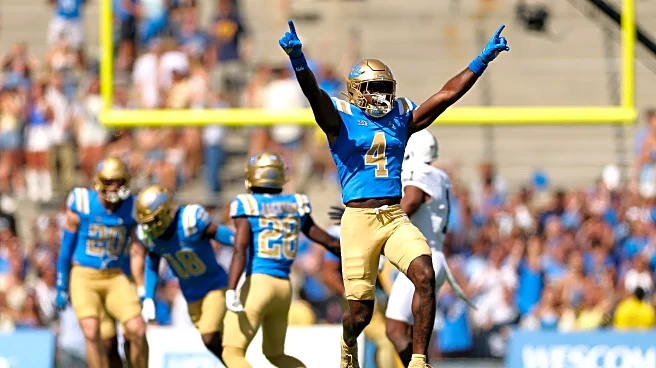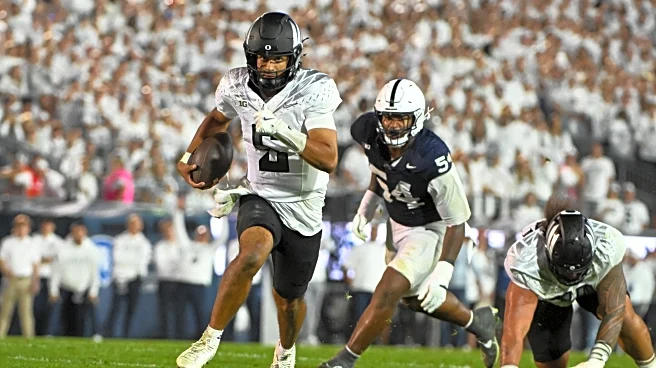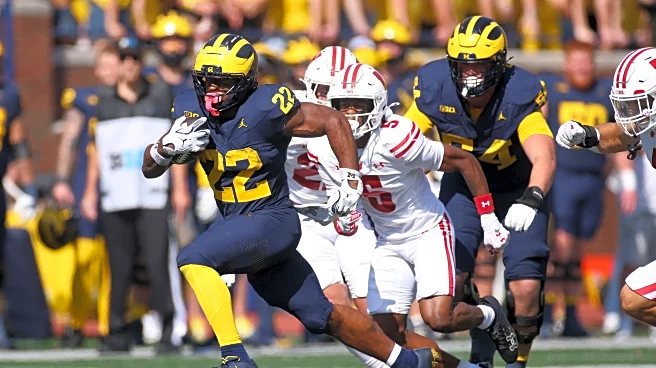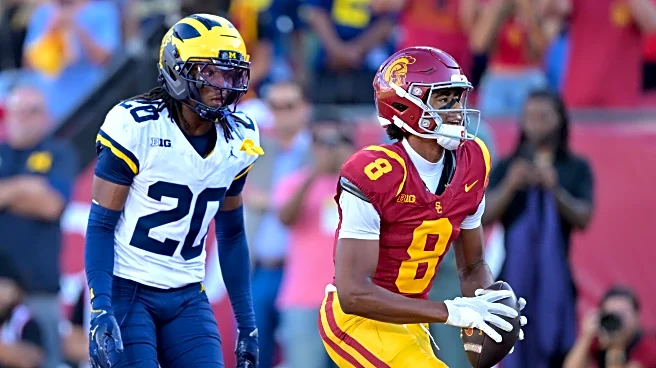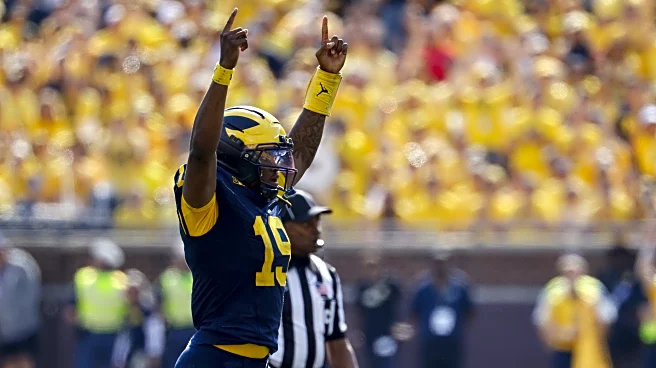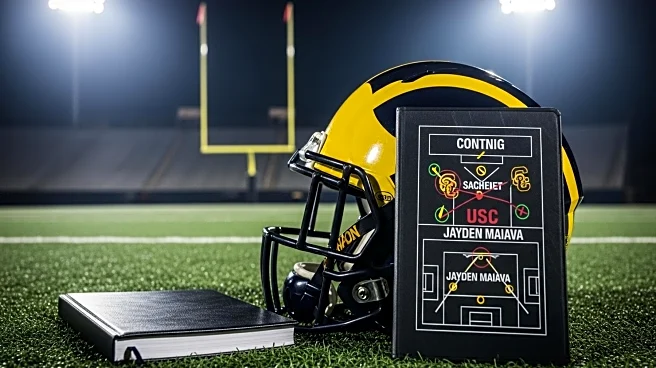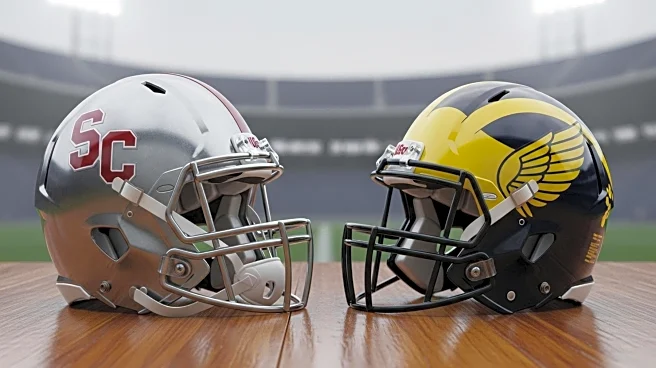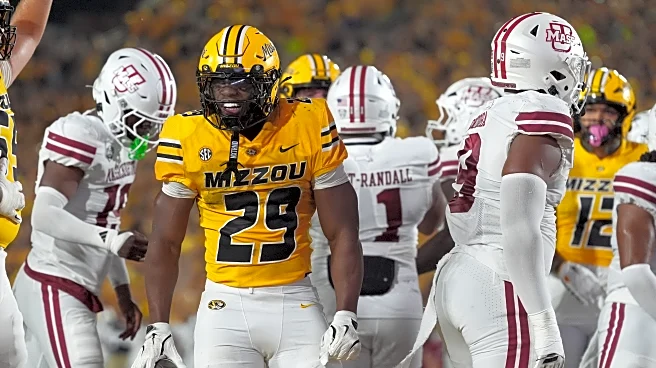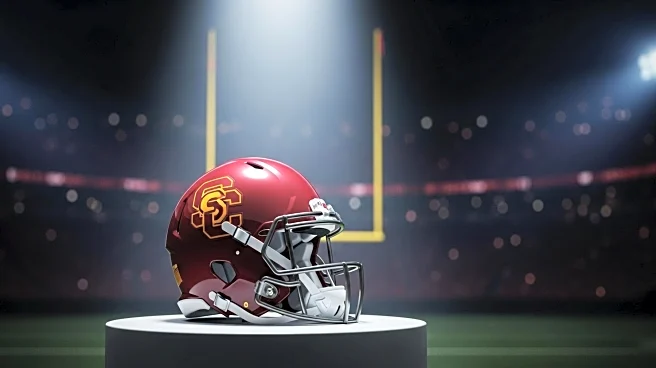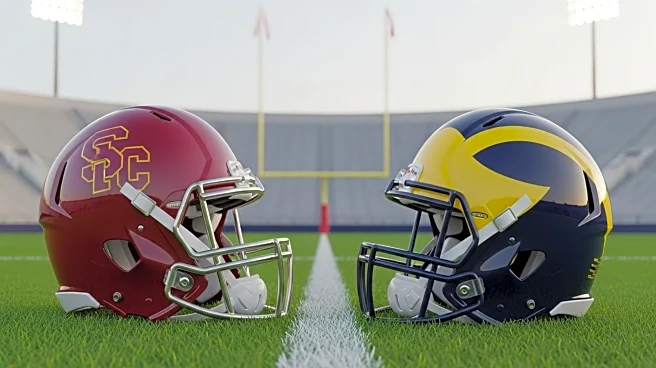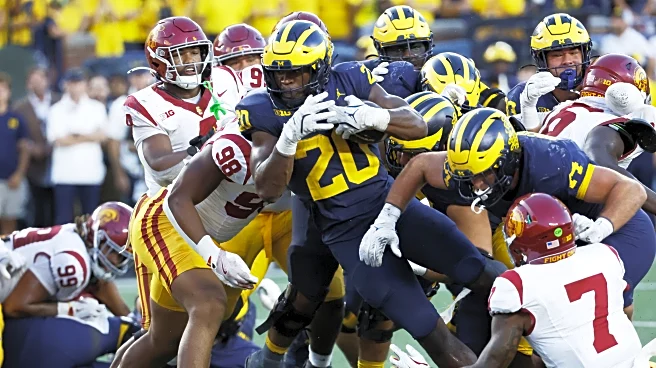What is the story about?
What's Happening?
King Miller, a walk-on running back for the University of Southern California (USC), emerged as a standout player in the Trojans' recent victory over Michigan. Despite not having a scholarship, Miller was called to action due to injuries within the team's running back lineup. He seized the opportunity, rushing for 158 yards and scoring a touchdown, marking the first time a walk-on has scored for USC since 1994. Miller, who hails from Calabasas High School in California, has familial ties to USC, with his twin brother Kaylon playing as an offensive lineman and his cousin Olaijah Griffin having played cornerback for the Trojans. USC's current record stands at 5-1, with a 3-1 record in Big Ten play.
Why It's Important?
King Miller's performance is significant as it highlights the potential for walk-on athletes to make impactful contributions to their teams. His success underscores the depth and resilience of USC's football program, particularly in overcoming injuries. This event may influence USC's decision-making regarding scholarships and team strategy, as Miller's performance could earn him more playing time and recognition. Additionally, his story serves as an inspiration to other walk-on athletes, demonstrating that perseverance and talent can lead to unexpected opportunities and success.
What's Next?
USC will likely evaluate its running back situation as the season progresses, considering Miller's recent performance. The team may decide to offer Miller a scholarship if he continues to excel, providing him with more stability and recognition. As USC aims to maintain its strong record, the coaching staff will need to strategize on how to best utilize Miller and other players to ensure continued success. The Trojans will also focus on recovering injured players to strengthen their lineup for upcoming games.
Beyond the Headlines
King Miller's story may have broader implications for college sports, particularly in how walk-on athletes are perceived and valued. It raises questions about the criteria for awarding scholarships and the potential for underrepresented athletes to rise through the ranks. This development could lead to discussions on the importance of providing opportunities to talented individuals who may not initially fit traditional recruitment profiles.
AI Generated Content
Do you find this article useful?


